Piles of trash: Inside the mess of Brisbane’s worst hoarding houses
Piles of rusting cars, bike parts, old TVs, empty jars and towers of tissue boxes. Welcome to Brisbane's worst hoarders’ houses.
QWeekend
Don't miss out on the headlines from QWeekend. Followed categories will be added to My News.
Piles of rusting car bodies, old bike parts, plastic bins, wooden planks, old televisions, chains, a stagnant swimming pool and a dilapidated merry-go-round rust behind a tall wire fence hung with black plastic.
Another suburban yard is crammed with shipping containers, semi-trailers, a caravan, piles of twisted metal, fencing material, pavers, tyres, fridges, mattresses and a kitchen sink, all overgrown with waist-high grass.
Front doors of tired but outwardly unremarkable homes open to reveal goat tracks winding between piles of clutter – newspapers, bills, clothes, furniture, books, appliances, empty jars; the scuttling of vermin and rodents sometimes accompanying each step past rooms made inaccessible by detritus.
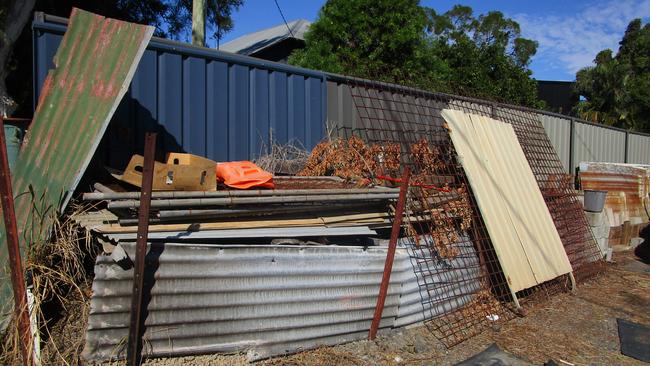
It’s hard to believe, but these properties so often decried as eyesores and health hazards are family homes.
Few people who live this way share their stories publicly, such is the shame and stigma which goes hand-in-hand with hoarding and squalor.
It is left to local councils to negotiate between often defensive, reclusive owners and fed-up neighbours; the worst cases can result in court action and steep fines.
As more is learnt about the complexities of the condition known as hoarding disorder, which affects up to six per cent of the population – more than 300,000 Queenslanders – the clearer it becomes that a solution is not as simple as bringing in the skip bins and pulling on the rubber gloves.
Still, concerns about the lack of treatment and support services to reduce risks to individual and public health, of neighbourhood conflict, homelessness and fire, and calls for a statewide co-ordinated, multi-agency approach have so far fallen on deaf ears – despite predictions the mess is only going to get bigger, literally and figuratively.
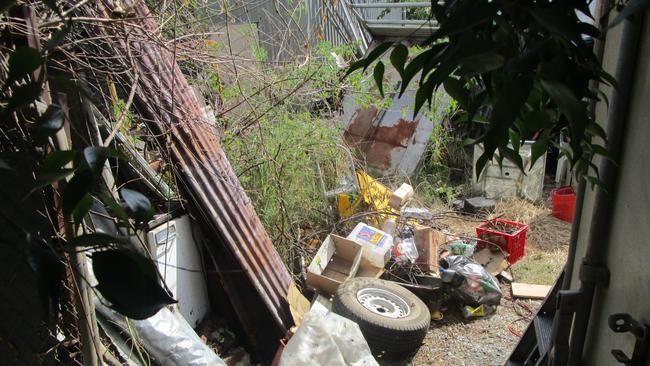
All that remains of her favourite childhood doll is shreds of cloth but Sarah is too “sentimental” to throw away those beloved rags, let alone the filing cabinet full of old school assignments. She collects water bottles because they’ll be useful in a natural disaster, while piles of magazines are full of useful advice waiting to be read one day.
John regularly came home from school to find his mum had cleaned his bedroom and thrown everything out. It was devastating. Every. Single. Time. Today he hoards clothes, books and magazines in one room of his house, and has a thing for shoeboxes like the ones in which he learnt to secret his most precious childhood possessions.
Growing up, Anne’s family was poor, living in an army tent, then an egg shed next to a chicken farm. No running water, no electricity, no possessions. As an adult, endlessly acquiring things was her way of dealing with the grief of four miscarriages and, later, the loss of her romantic relationship.
Louise picked up her hoarding tendencies from her late father, who crammed the family home with endless stuff. She was always fighting with him about the mess and trying to clear space for herself. Today, she collects furniture, books and comics, can be an indiscriminate spender and has a hard time letting go of anything. Unlike most though, she sought help and is reaping the benefits. Slowly.
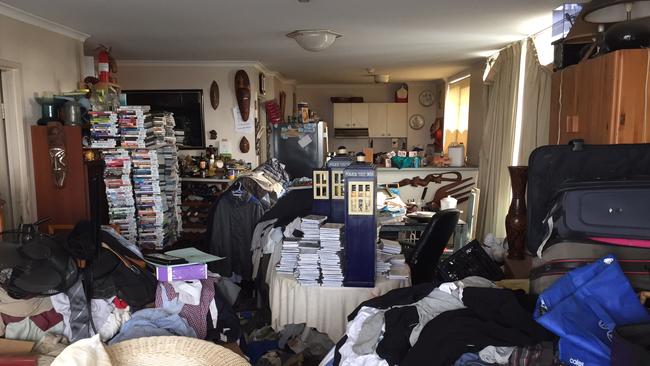
Their names are fiction but the scenarios real. Each points to complex issues underlying hoarding disorder, defined by the Australian Psychological Society (APS) as “difficulty discarding material possessions, accompanied by frequent accumulation of possessions and cluttered, disorganised living spaces”, which it predicts will become “a more frequent diagnosis”.
The APS says the condition affects between two and six per cent of people, is characterised by a lack of insight into the harmful behaviour, is more common in men than women – though women are more likely to seek treatment, and those seeking help are usually aged 50 years or older. Items commonly hoarded include paper products including magazines, receipts and bills, clothes, jars and bottles, and craft items; in the worst cases, neglected animals, rubbish and bodily waste.
Brisbane clinical psychologist Dr Emily O’Leary says while hoarding has been around for a long time, it was only recognised as a stand-alone disorder in 2013, having previously fallen under the umbrella of Obsessive Compulsive Disorder (OCD).
“The main reason it hasn’t come to attention is because people with hoarding disorder fundamentally don’t seek a lot of treatment. They only present to appease a family member, or there’s been a house fire, or there’s been interaction with health authorities or something like that. They’re a hard bunch to study, and a harder bunch to sometimes treat,” says O’Leary, one of Queensland’s only specialist practitioners.
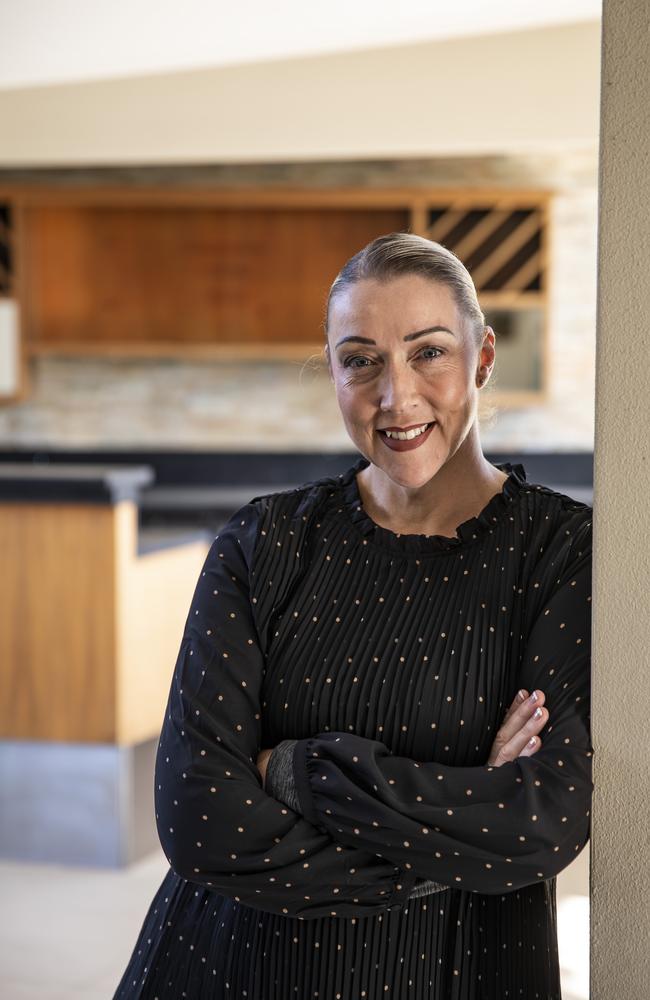
“There’s a good treatment protocol there but you have to do a lot of legwork to get them to that point and it’s really tricky. Hoarding is underpinned by a good whack of genetic and background factors. Clutter is really the end point, and the beginning point is all those things bubbling under the surface that contribute.” O’Leary says people with hoarding disorder often have associated conditions like ADHD, depression and anxiety disorders, process information in fundamentally different ways and have usually suffered a significant trauma.
“Essentially there has been some kind of damage and abuse, or their emotional and physical needs haven’t been met and, for them, there is a transfer of attachment to objects over and above people. This becomes their safe place and their safe things,” she says. “That’s why, in the shows you often see on the telly, where someone just comes in and cleans everything, that is just so traumatic for the person. Even though we might not understand why that person would be so attached to chip packets or 10-year-old magazines, it’s like there’s an invisible string. For them, it would be like ripping off an arm or a friend ending a friendship.”
O’Leary, a private practitioner at the Brisbane OCD Clinic, is currently working with three clients with hoarding disorder – her limit due to the time-intensive treatment process, which can last for years. She’s unaware of any public health services specifically addressing hoarding disorder and says there are no support groups for people living with the condition or their families. “There needs to be a lot more compassion and understanding around this issue. I’ve had clients, who for their entire life have never invited friends over to their house, even though they might be part of a coffee morning once a week, because of the shame; the kids have never been able to invite friends home. These are really intelligent, bright, articulate people who often live alone because of the condition, or may be divorced or those types of things,” she says.
“How you get (the public) to understand is to stress that (hoarding) looks like a choice, but it’s not a choice. This is about being compelled to do something. Anything you have a sentimental attachment to, magnify that by 1000, that’s what people with hoarding concerns feel like when they’re asked to let go of something. Imagine a person who feels like this, and then all of a sudden, (council) health authorities knock on their door. It is shame heaped upon shame.”
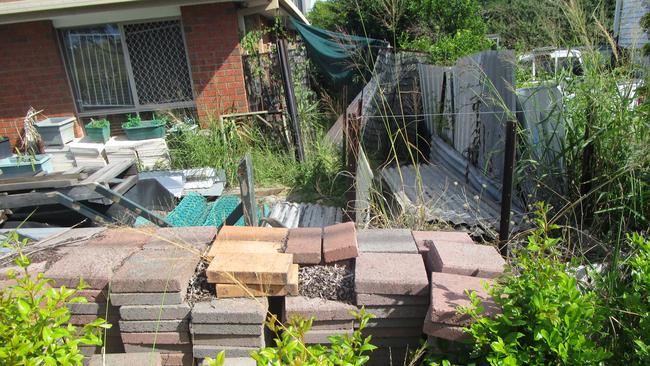
Local Government Association Queensland CEO Greg Hallam says councils are only equipped to provide a regulatory response to public health issues and rely on other government agencies and service providers to address mental health concerns.
“Given hoarding disorder and squalor often result from significant trauma, enforcement of clean-up orders does not address the root cause and, therefore, the affected person will likely continue to gather items and the cycle will continue. The effective management of extreme hoarding requires a multi-agency response,” he says in a written statement. Hallam’s comments mirror recommendations made by Churchill Fellow Donna Bowe after her 2013 research trip across America, which has about 50 multi-agency taskforces working to prevent and treat compulsive hoarding.
Bowe is a community development co-ordinator with Brisbane City Council, the only council in Australia to run a targeted program addressing hoarding and squalor, as well as chair of the voluntary Greater Brisbane Hoarding and Squalor Group, made up of a variety of community and service agencies, which offers training and support to other local councils nationally.
With an allocated budget of $198,000 per annum, the Hoarding and Squalor Reduction Initiative encourages residents to clean their properties before enforcement notices and fines are issued or court action initiated. BCC received close to 40,000 hoarding complaints and issued 431 public health orders in the past five years. In 2020, 113 public health orders were issued across 48 different suburbs – up 37 on the previous year. The Public Health Act 2005 allows for a local council or state government to require a resident to remove, reduce, control or prevent a risk to public health, such as hoarding or squalor. If a person does not comply with the order, they can be fined more than $15,000.
As Bowe – who declined to be interviewed – identified in her research report, while there are no “quick fixes”, the issues surrounding hoarding “have not been well recognised and understood in Queensland” where many people have “fallen between the cracks” and services have “struggled with a lack of knowledge, training, support and resources”.
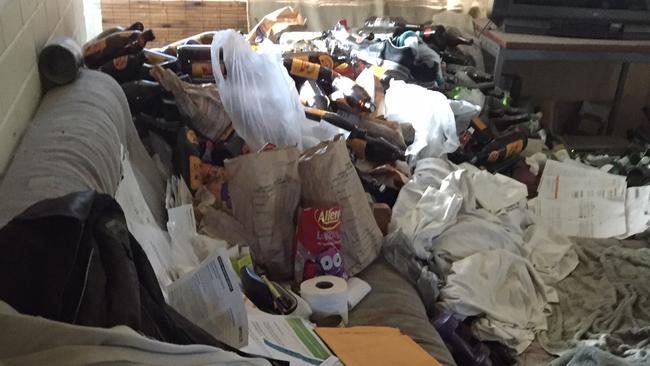
Rather than one-off cleans, Bowe wrote “on-ground collaborations” provided the best response. To address “significant gaps in (Queensland’s) services and expertise”, she recommended a statewide task force and policy be established, and funding be allocated to outreach workers, specialist-trained therapists and mental health workers, professional organisers, cleaners and other in-house services. She said partnerships with universities, professional mental health bodies and practitioners, as well as experienced US stakeholders, were needed to build local expertise.
Bowe says beyond the “incalculable human costs” to individuals and families, let alone their personal medical and associated expenses, the estimated $6.43 million price tag born by San Franciscan services to help between 12,000 and 25,000 residents in just one year was a “strong case” for better resourcing of services and systems locally.
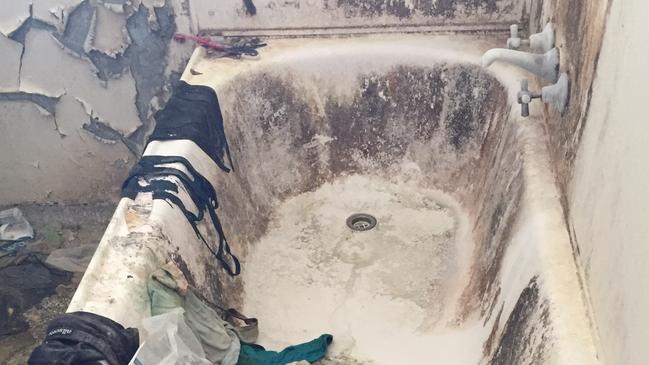
“It must be acknowledged compulsive hoarding is a treatable condition, and there is a significant need to develop specialist therapeutic approaches in Brisbane that can treat people. Recovery based, peer support groups and peer responder programs have proven very successful in the United States … Innovative, evidence-based models of intervention offer responses that can support significant progression in Brisbane in a comparatively short amount of time.”
There is little evidence any of Bowe’s recommendations have been acted upon. A Queensland Health spokesman said any hoarding complaints were referred to relevant local governments, and specialist mental health programs were run by community-based support organisations.
Queensland Fire and Emergency Services could not provide any information relating to hoarding or squalor-related incidents, training or fire prevention. Melbourne Metropolitan Fire Brigade (MFB), incorporated into the new Fire Rescue Victoria this year, is believed to be the only service nationally to actively collect data and develop research in this area. A 2014 report found hoarding and squalor incidents were a significant and increasing risk, accounting for almost a quarter of preventable residential fire deaths in a decade.
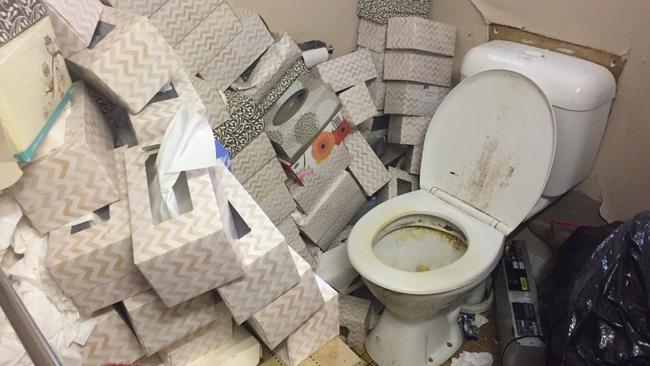
A Public Housing and Works Department spokesman says changes were made to the state’s housing strategy, including building partnerships with the mental health sector and targeted tenant programs, following a 2016-2017 trial of a housing, mental health and welfare initiative. It works with BCC and Greater Brisbane Hoarding and Squalor Group.
Neither the department nor the Residential Tenancies Authority collect data on the incidence of hoarding and squalor but the trial’s final report, released in late 2017, describes hoarding and squalor as a “significant”, “chronic and enduring” issue affecting people’s tenancies. “Customers who are experiencing hoarding and/or squalor are linked with community agencies which specialise in supporting people to maintain a safe and healthy home environment. At a local level, Housing Service Centres work alongside the tenant and support agencies to support customers who are experiencing hoarding and/or squalor to create sustainable tenancies,’’ she says in a written statement. “The department undertakes a series of steps in order to retain tenancies where possible – evictions are a last resort.’’
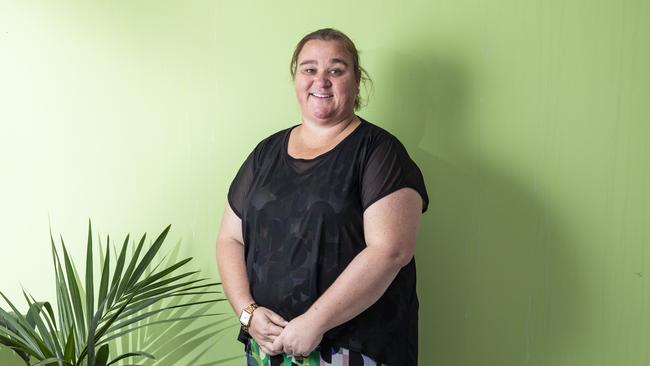
Surrounded by smiling, grateful fans , all clamouring to shake hands and say “thanks”, a stunned Lucy Nash and Stevie-Lee Conroy felt like celebrities walking the red carpet. It was March 2020 and Nash and Conroy, both CentaCare service delivery managers, had wrapped up the first day of the acclaimed 20-week Buried in Treasures group program, providing training, strategies and support for people living with hoarding disorder. Based on the self-help book by American experts Dr Randy Frost, Dr David Tolin and Dr Gail Steketee, the scientific evidence-based program was identified as a key resource in Bowe’s report. “It’s watching people come to the realisation of, hey, this doesn’t necessarily have to be something I have to struggle with forever. It’s being blessed with being able to observe somebody see a light at the end of the tunnel they never thought existed. It’s seeing someone go, oh, I’m not alone in this, I’m sitting in a room of 18 people living with the same types of fears and concerns and questions and stigmas. You just slowly start seeing them gain hope that there’s actually a way out,” says Nash, 30.
This was the first time Centacare ran the program, though it has run intermittently in Brisbane in the past. Funded by a one-off $33,000 Department of Public Housing and Works grant, it is unclear if the program can be run again this year despite its success.
Funding is a constant issue. Typically clients are referred to Centacare and support workers are assigned to help people clear their homes of clutter, either in a one-off intensive clean or ongoing appointments. CentaCare receives no government funding and while some clients can access grants from other organisations, it costs others between $2200 and $18,000 depending on the work that needs to be done. A “huge” number of clients can’t afford these services, which Nash and Conroy want included in the National Disability Insurance Scheme (NDIS). “It’s definitely an increasing problem but that also comes with growing awareness,” Conroy says. “We don’t do the mental health side of things. We offer a supportive role where we’re side-by-side, working through different ways of decluttering.’’
Her team works with 14 clients on a weekly or fortnightly basis but their referrals are constant, the waiting list long. Clients range from a doctor to a pensioner, typically aged 50-65 years.
“Some clients we work very, very slowly with, that could go on for years of support. A lot of people are very emotionally attached, while others have reached a stage of acceptance, so we can work quicker. You do have setbacks – different times of year can trigger a memory – and we go backwards for a while, but we just keep that supportive work happening,” Conroy says.
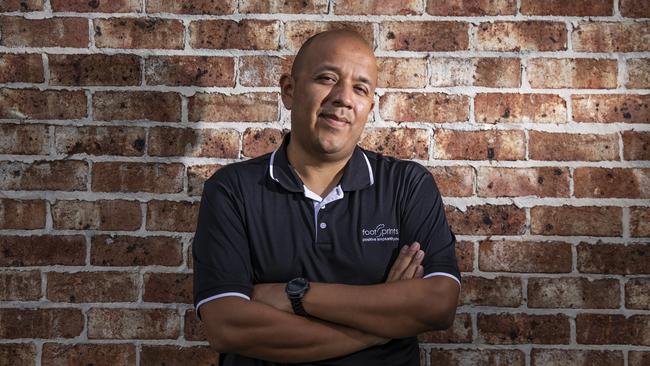
Footprints case manager Jorge Ayala runs two programs for people with hoarding disorder, one targeting those aged over 55 at risk of homelessness funded by the federal government and a decluttering service paid for by the client. Footprints staff also provided psychosocial and tenancy support services to public housing recipients as part of the Public Works and Housing Department’s two-year trial.
“I would say 90 per cent of our referrals come through My Aged Care. As a percentage of my caseload, 50-60 per cent would be hoarding. And I’ve noticed I’ve had a lot more referrals for decluttering,’’ says Ayala, 39, estimating a month-long waiting list.
Ayala, Nash, Conroy and O’Keefe agree the sector is underfunded and needs a multifaceted, co-ordinated approach.
“It’s also about being really mindful that behind all that stuff there is just a person; a human being like us,” says Nash. “Seeing the hope in people’s eyes, that’s a huge thing; to see them realise that with a friendly person beside you, these things you didn’t think were achievable are, and seeing their pride. The Buried in Treasures program is groundbreaking for us. If we can do this with just that small amount of funding, imagine what we can do if we were recognised on a larger scale?’’
***
HOARDING DEFINED
* Hoarding disorder is defined by difficulty in discarding material possessions, resulting in cluttered, disorganised and often inaccessible living spaces, significantly affecting a person’s quality of life.
* Affects 2-6 per cent of the population in western countries, particularly men.
* Often associated with past trauma, depression, anxiety, ADHD and perfectionism.
* Commonly collected items include clothing, kitchenware, haberdashery, ornaments, toys, hardware and paper items like newspapers, bills and brochures.
* Shame, stigma and isolation mean people do not tend to seek out treatment; many also lack insight into the extent and effects of the disorder they live with.
* Cognitive behaviour therapy is the most effective treatment.
Source: Australian Psychological Society.
***
COUNCIL STATISTICS ( as at November 2020)
Brisbane City Council (popn: 2.3 million)
Public health/vegetation/visual amenity complaints: 39,884 (2015-2022)
Public Health order issued: 431
2020/21 Hoarding reduction budget: $194,000
Logan City Council (popn: 334,358)
Hoarding complaints: 94 (2015-2020)
Public Health Orders: 34 (May 2015 - 2020)
No specific budget.
Sunshine Coast Regional Council (popn: 361,870)
Hoarding complaints: 67 (2015-2020)
Public Health Orders: 3 (2015-2020)
No specific budget.
Gold Coast City Council (popn: 620,518)
Hoarding complaints: Avg 2 per year
Public Health orders issued: Not provided
No specific budget.
Ipswich City Council (popn: 219,890)
Hoarding complaints: 5 (2017-2020)
Public Health Orders issued: Not provided
No specific budget.
Moreton Bay Regional Council (popn: 469,465)
Hoarding complaints: 10 (2015-2020)
Public Health Orders issued: 0 (2015-2020)
No specific budget.
NB: complaints are not necessarily confirmed cases of hoarding.




